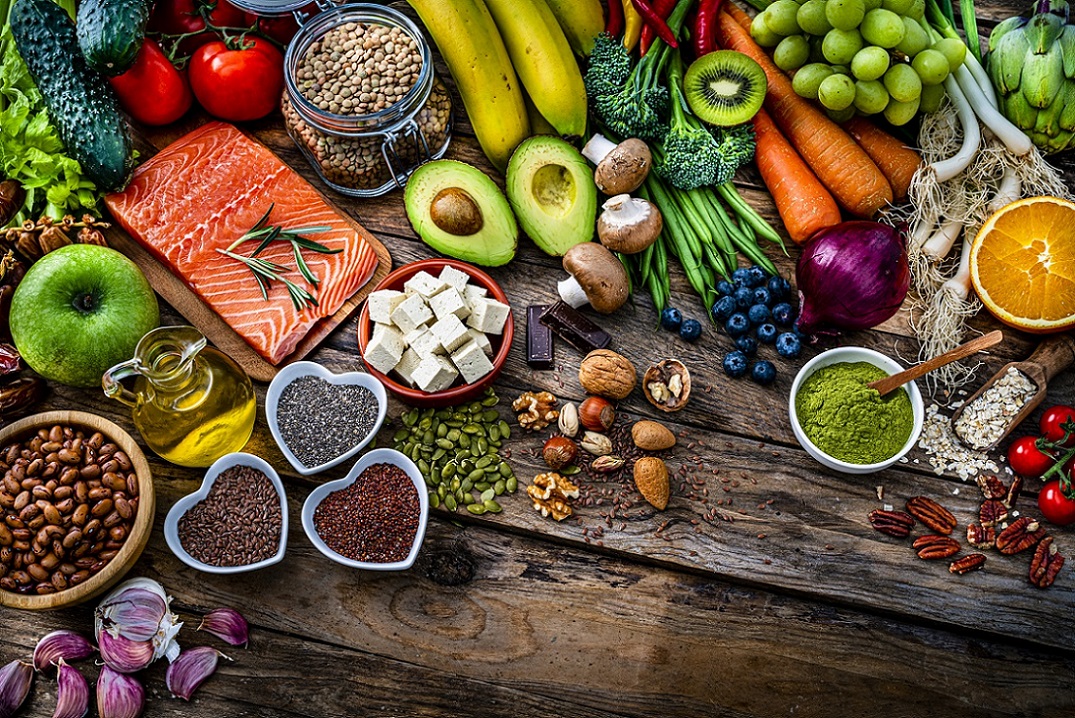Creating a Heart Healthy Diet Plan
February 24, 2025
Categories: Live Your Whole Life, Healthcare 101, Cardiovascular
Since 1964, February has been observed as American Heart Month, raising awareness about heart disease as the leading cause of death for Americans.
As our country recognizes the 57th year of this campaign, here are 7 nutrition tips for lowering your risk of heart disease and living a more heart healthy life:
1. Find a physician and know your numbers. Be sure to establish with a regular physician that will get to know you and track your health history. Know your numbers including total cholesterol, LDL and HDL cholesterol, triglycerides, blood glucose, A1c, and blood pressure. Your practitioner will designate how often your labs and blood pressure should be checked.
2. Eat more plants. A plant-based diet encourages increasing fruits, vegetables, whole grains, reducing intake of animal protein and upping plant sources of protein which can reduce saturated fat and increase fiber. Plants are sources of plant stanols and sterols which also help to improve cholesterol. If you look down at your plate and it’s beige or tan, you want to add in color. Eat the Rainbow by having a variety of fruits and vegetables in your diet which includes all colors of the rainbow. A good rule of thumb is to make 50% of your plate fruits and vegetables and include more plant sources of protein like nuts, seeds, soy, beans, and legumes.
3. Follow a Mediterranean diet and include more fish. The Mediterranean diet is a heart-healthy diet that emphasizes more plants, unsaturated fats, fish, and limiting foods higher in saturated fat and sugar.
Include fish at least 2 times per week. Fattier cuts of fish like salmon, mackerel, or tuna have higher amounts of Omega-3’s. If you don’t enjoy fish or seafood, you can still get Omega-3 from plant sources like walnuts, ground flaxseed, hemp seeds, edamame, seaweed, and chia seeds.
It’s best to get most of our nutrients from diet first but there are options for Omega-3’ s in supplemental form. Looks for supplements with USP verification on the label. Add in ground flaxseed, hemp, or chia seeds to foods like smoothies, oatmeal, salads, and Greek yogurt.
4. Choose more healthy fats. Limiting fattier cuts and processed meats, fast food, highly processed foods, and hydrogenated oils can help reduce inflammation, saturated fat, and trans-fat in our diet. Add in more healthy fats like Omega-3’s, monounsaturated fat and oleic acid from extra-virgin olive or avocado oil, nuts and seeds, and avocados. Nuts like almonds, macadamias, cashews, hazelnuts, pecans, peanuts, and pistachios are some of the highest monounsaturated fats.
5. Limit highly processed food. Highly processed foods tend to be low in fiber and higher in sugar, carbohydrate, and sodium. They may temporarily satisfy us but don’t help us to feel full over longer periods of time. They may contribute to inflammation, greater fluctuations in blood sugar, increased thirst, and overeating. This can ultimately lead to weight gain. Choosing a balanced meal or snack that includes higher fiber carbohydrates, plant or lean animal sources of protein, fruits, vegetables, and healthy fats help us feel fuller and satisfied longer.
6. Flavor foods with different herbs and spices. Americans consume on average 3,400 milligrams of sodium per day. To reduce sodium intake, plan to cook at home most of the time and get creative with your cooking by adding in herbs and spices or using salt free seasonings like Dash. Flavorful additions to cooking include lemon, vinegar, garlic, ginger, curry, cinnamon, thyme, rosemary, and different peppers. Look for lower sodium or no salt added items. Limit higher sodium foods like dressings, flavored rice, cured meats, foods packed in brine, microwavable meals, condiments, and snack foods like chips and pretzels.
Eating out can be higher in sodium, saturated fat, calories, and carbohydrate. If you struggle with having time to cook, utilize low sodium canned items or frozen options like beans, fruits and vegetables that are already chopped and easy to steam or roast. Some stores have pre-chopped items as well. There are also meal delivery services and recipe websites with “5 ingredients or less” for ideas for healthy meal ideas that are quicker and easier to make.
7. Increase fiber. Fiber helps reduce LDL cholesterol, keeps us fuller longer, helps blood sugar, provides good gut bacteria, and reduces risk for colon polyps. However, Americans are only getting about 50% of the recommended fiber intake. The goal for men is 35 grams of fiber per day and women 25 grams of fiber per day.
Higher fiber foods include quinoa, whole grain breads and pastas, keto breads, higher fiber tortillas, bran cereals, steel cut oats, beans and lentils, nuts and seeds, ground flaxseed, chia seeds, fruits and vegetables especially with the skin, bulgur and farro and other whole and ancient grains. If you feel you cannot get in enough fiber from diet alone, a fiber supplement can be helpful. Be sure to drink plenty of fluid and increase fiber intake, gradually.

Jennifer Anthony, RD, LD, is a registered dietitian with SAHS Corporate Health and Wellness.
